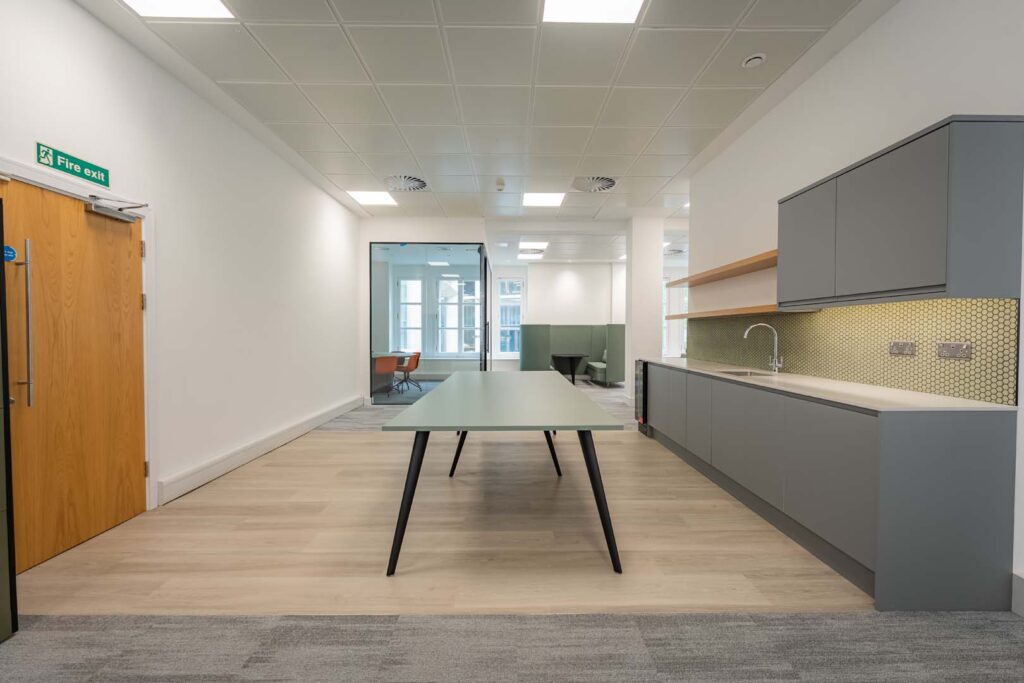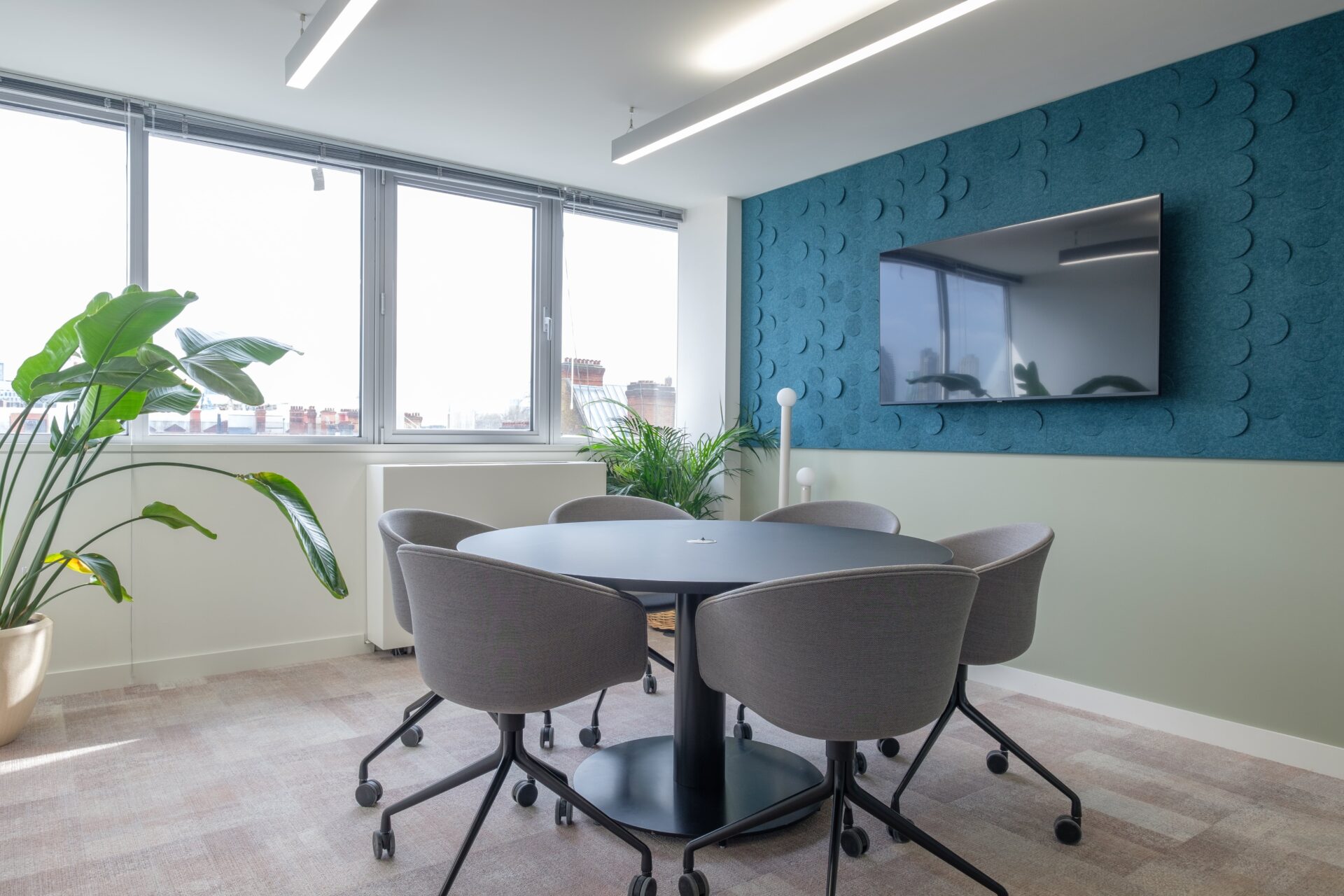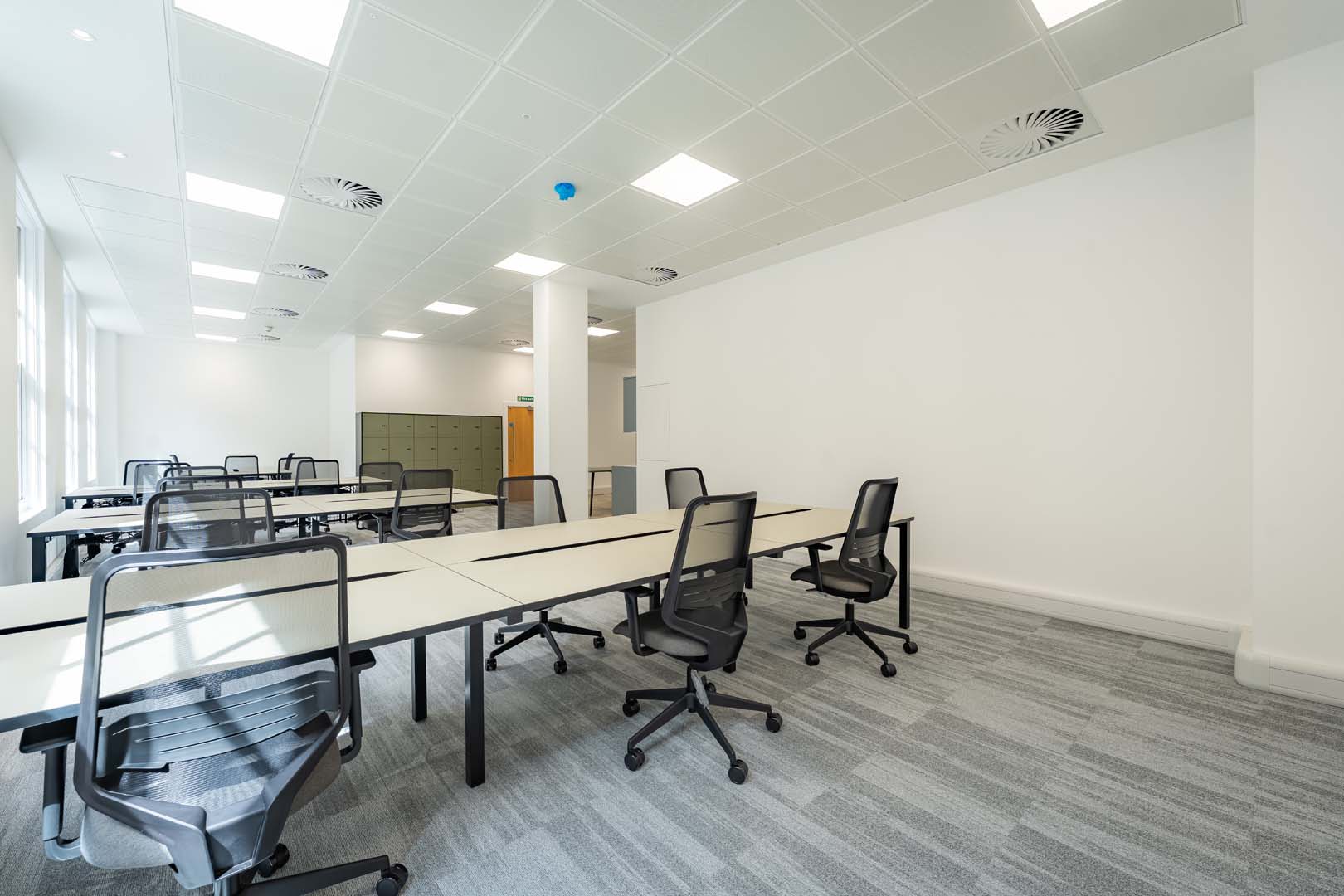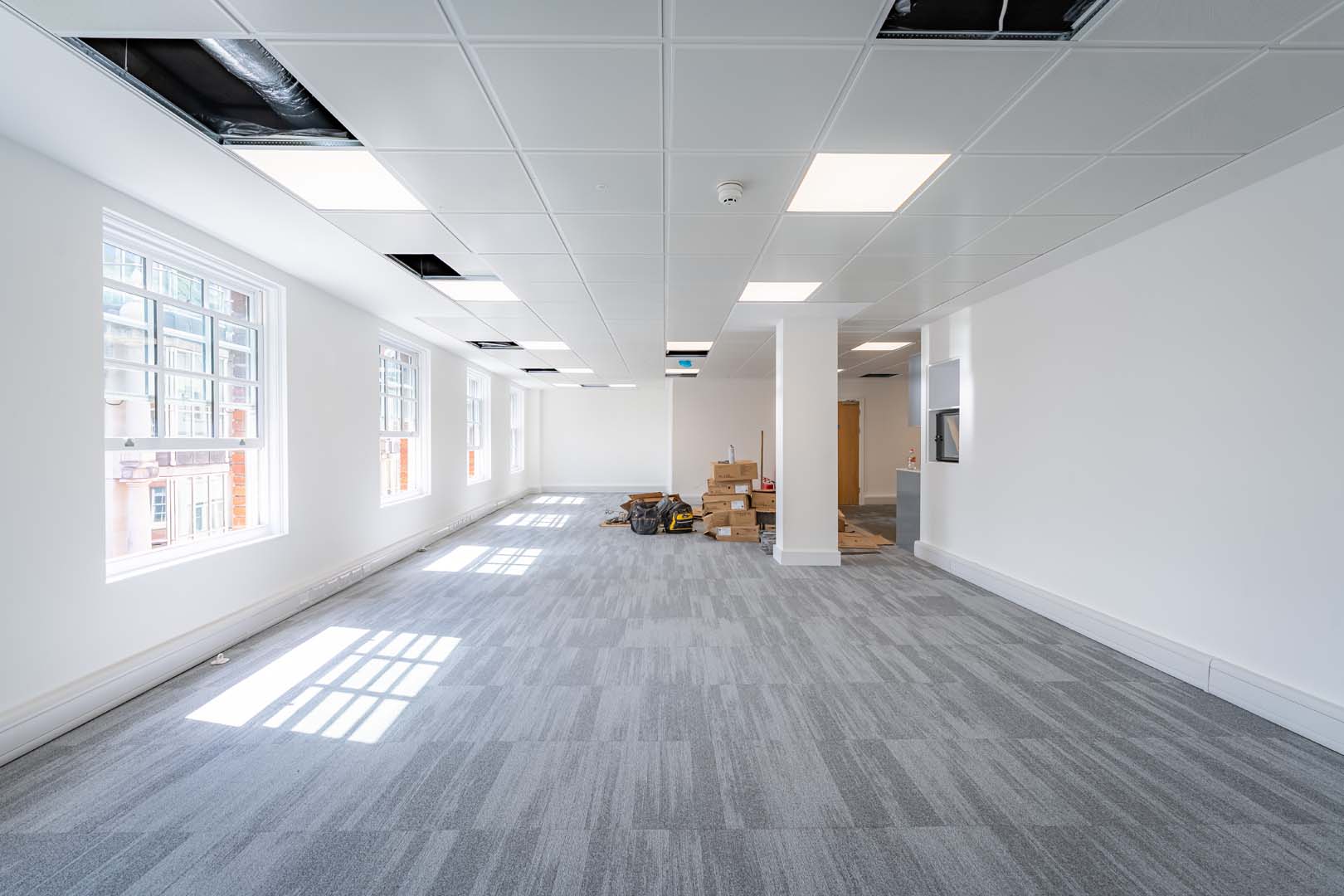Planning an office fit? One of the first, and biggest, questions every business asks is: how much will it cost? The truth is, office fit out costs aren’t just numbers on a page.
They can determine whether your office space becomes a productive, collaborative environment… or a budget headache. With today’s fluctuating construction costs and evolving workplace demands, understanding fit out costs upfront gives you the power to plan with confidence and avoid expensive surprises.
We’ll cover what really drives fit out costs, how much you can expect to pay per square foot in 2025, and the smartest ways to keep your project cost-effective while creating an office that works for your employees.
Fit Out Fundamentals: Starting with the Basics
What is an office fit out?
An office fit out turns a blank or outdated office space into something much bigger: a workplace that inspires employees and drives business performance.
Today’s office fit outs are a powerful investment in productivity, collaboration, and employee well-being, helping companies create spaces where people actually want to work.
The Shift In Working Environment
As hybrid working and remote work reshape the modern office, businesses are rethinking what their office space should deliver.
Workplace has to support both face-to-face collaboration and seamless virtual connections. The right office fit out doesn’t just provide desks and meeting rooms, it brings employees together, fosters innovation, and reflects your company’s values.
And to achieve that, understanding the key factors behind fit out costs is essential for creating a workspace that supports your people, no matter where they are located.
Why Offices Are Embracing Fit Outs
Office design trends are shifting fast. Businesses are moving towards flexible layouts, ergonomic furniture, and seamless technology integration that make it easy for employees to work how they work best.
In a competitive job market, a high-quality office isn’t just nice to have, it’s a key tool for attracting and retaining top talent.
Whether it’s open collaboration spaces, private meeting rooms, or quiet focus areas, a thoughtful office fit out gives your business the edge and ensures your workspace evolves with your needs.
The Only Guide You’ll Need
In this guide, you’ll discover what really drives office fit out costs, the latest design trends, and how to get the best value from your office space. Whether it’s a basic refresh or a high spec office transformation, this guide will give you the clarity to plan with confidence.
How Much Will Your Office Fit Out Really Cost?
Office fit out costs in 2025 range from £40 to £125+ per square foot, but the exact figure depends on your specification, project complexity, and location. And that headline range only tells part of the story.
Fit out costs depend heavily on whether your project is CAT A (landlord-led) or CAT B (tenant-led).
CAT A (Landlord – base build, whitebox, plug & play):
- £40–£55 per sq ft – light-touch CAT A / whitebox works
- £55–£75 per sq ft – typical CAT A
- £75–£95+ per sq ft – CAT A+ / plug-and-play ready-to-let
CAT B (Tenant – design & build, tailored to your business):
- £40–£60 per sq ft – basic specification
- £60–£80 per sq ft – mid-range schemes
- £80–£100 per sq ft – high-quality projects
- £120+ per sq ft – premium installations
This tiered approach reflects the finish, technology, and features you choose, helping you benchmark fit out costs more accurately.
These tiers aren’t just about price; they reflect the level of finish, technology integration, and sustainable features you choose.
In reality, most office fit outs land between £58 and £120 per sq ft, but factors like location, timing, and project complexity can easily push costs higher. These figures reflect the growing demand for premium workspace environments that support modern working practices and employee wellbeing.
That’s where a fit out cost guide proves invaluable, helping you benchmark your project, compare regional variations, and make confident, informed decisions about your office space.
Budget Breakdown: What You’re Really Paying For
Knowing where your money goes in an office fit out makes budgeting clearer and decision-making easier. Every project is made up of different cost components, construction, refurbishment, furniture, and more, each contributing to your overall investment in different ways.
Construction and installation work is where the bulk of your office fit out costs go, usually 60–70% of the total budget. This includes partitioning, flooring, ceilings, electrical systems, plumbing, and heating, ventilation, and air conditioning (HVAC). The more complex these elements are, the higher your per-square-foot costs climb.
Furniture and equipment are the next big investment, usually taking up 15–20% of your fit out budget. On average, that works out at £12–£35 per sq ft depending on the specification. This covers everything your people need day-to-day, desks, chairs, storage, breakout furniture, plus meeting room tech like AV and video conferencing.
Technology infrastructure makes up the final key slice of your fit out budget. Alongside construction and furniture, it typically accounts for the remaining share, covering essentials like high-speed connectivity, smart office systems, and AV for hybrid collaboration. While these features add to overall costs, they complete the picture by creating a workspace that’s connected, efficient, and future-ready.
How Geography Impacts Your Office Fit Out Costs
Location plays a big role in office fit out costs. In London, especially in the central business district, projects are typically 15–25% more expensive than in regional markets.
Higher labour costs, transport and logistical expenses, and intense demand for Grade A office space all drive up prices, alongside stricter regulations and longer timelines.
By contrast, regional projects usually offer more competitive pricing while maintaining quality, though businesses may face limits in specialist expertise or contractor availability.
Office Fit Out Tiers Explained: What Each Gets You
The specification level you choose sets the tone for your entire office fit out. It shapes the cost, the look, and how well your space supports your people. By understanding the different categories, you can align your investment with both day-to-day needs and long-term business goals.
Basic Specification
If you’re looking for a budget-friendly office fit, a basic specification is the most cost-efficient option. These projects focus on essential functionality, using standard materials and straightforward layouts to create a practical, comfortable workspace.
A standard office fit at this level typically includes new flooring, decoration, and essential furniture, along with carpet tiles, partitions, standard lighting, and core mechanical and electrical systems. It’s a simple, affordable way to refresh an office space while keeping costs under control.
Mid-Range Specification
A step up from the basics, a mid-range office fit out balances cost efficiency with style and functionality. These projects use enhanced materials and smarter technology integration to create a more polished, professional environment.
Typical features include branded reception areas, varied workspace zones, upgraded lighting, and improved acoustic solutions. This level of fit out not only looks sharper but also boosts employee satisfaction and strengthens your brand presence.
High-Quality Specification
A high-quality office fit out delivers a premium workspace with top-end finishes and advanced technology. These projects go beyond functionality, combining sophisticated design concepts, sustainable materials, smart building systems, premium furniture, and extensive branding to create a truly impressive environment.
While the investment is higher, the payoff is clear, these fit outs help attract and retain top talent, boost productivity, and leave a lasting impression on clients and employees alike.
Premium Luxury Specification
At the very top end, a premium luxury office fit out goes beyond high-quality standards with bespoke design, cutting-edge technology, and exceptional materials. These projects often include custom-built furniture, advanced environmental controls, premium acoustic solutions, and fully integrated technology to support modern collaborative working.
This level of fit out creates a truly one-of-a-kind workspace that makes a bold statement and reflects the highest standards of quality and innovation.
The Hidden Costs That Can Break Your Budget
Office fit out costs don’t stop at construction and furniture. Hidden expenses, if overlooked, can quickly eat into your budget and derail your project. Factoring them in from the start is key to keeping your investment on track.
- Professional services – architectural design, project management, and specialist consultancy usually add 10–15% to your base costs. While they’re an extra expense, they’re essential for handling planning permission, regulations, and system integration.
- Temporary accommodation – if your team can’t stay onsite during works, you may face costs for workspace rental, extra IT infrastructure, and downtime losses.
- Business disruption – phased projects, poor project management or extended timelines often mean lower productivity, extra security, or customer service interruptions, which can add up more than expected.
How Market Shifts and Seasonality Change Costs
When it comes to an office fit out, timing can make the difference between staying on budget and paying a premium. Seasonal demand, market shifts, and tight deadlines all play a role in what you’ll spend. By understanding these timing factors upfront, you can plan smarter and unlock real savings.
Seasonal variations – Summer is the busiest time for construction, which means higher demand, tighter contractor schedules, and premium pricing. In winter, costs can be lower, but you may face longer timelines due to weather delays
Market Conditions – Today’s high-demand market pushes costs up: materials are more expensive, labour is tight, and timelines may stretch. But there’s reason for optimism, JLL research confirms a broadly positive outlook for office fit‑outs in 2025 driven by renewed corporate confidence in expansion and workspace investment
Project timeline pressures – Accelerated schedules almost always mean higher costs. Rush projects often lead to premium pricing on materials, extended contractor hours, and additional charges for expedited delivery.
The Tech Behind Modern Office Fit Outs
From high-speed connectivity to smart lighting and climate control, technology is now one of the biggest drivers of office fit out costs. But it’s also what turns a standard office into a smart, flexible workspace, cutting energy use, improving comfort, and making hybrid working seamless.
Connectivity Infrastructure
Strong connectivity is the backbone of any modern office fit out. High-capacity data cabling, wireless networks, and redundant internet connections typically add £8–£15 per sq ft to your costs, but they’re essential for keeping business operations running smoothly. Skimp here, and the whole workspace can suffer.
Smart Building Technology
Automated lighting, climate control, and advanced security systems are becoming standard in modern office fit outs. They may raise upfront costs, but they deliver long-term gains, cutting energy use, improving comfort, and giving you data on how your space is really being used.
Collaborative Technology
Hybrid working has made collaborative technology a must-have in modern offices. From video conferencing facilities to interactive displays and integrated audio systems, these tools keep teams connected and productive, whether they’re in the office or remote. They do come at an extra cost, but the payoff is a workspace that truly supports the way people work today.
Building Green: Costs, Benefits, and Long-Term Value
Sustainability is now a key driver in office fit outs. While eco-friendly materials and energy-efficient systems can add to upfront costs, they often deliver long-term savings and boost your company’s reputation.
- Sustainable materials – Options like recycled flooring, low-emission paints, and responsibly sourced timber usually add 5–10% to material costs, but they improve indoor air quality and reduce environmental impact. They can also qualify your project for green building certifications, boosting property value and tenant appeal.
- Energy-efficient systems – LED lighting, high-performance HVAC, and smart controls may cost more upfront, but they typically pay for themselves within 3–5 years through reduced energy use.
- Waste reduction strategies – Smarter construction practices and ongoing operational efficiencies cut disposal costs and improve material use. Many companies find these strategies deliver a net positive return once the savings are factored in.
Office Fit Out Cost Calculator: What to Ask First
Budgeting for an office fit out can feel overwhelming, but it gets a lot easier when you break it down into the right questions. This step is a crucial part of capital planning and ensures you avoid unexpected expenses.
- What is the size of my office space?
Fit out costs are usually calculated per square foot or square metre, so the size of your space is the foundation of your budget. - What specification level do I need?
Do you need a basic office fit, a medium specification, or a high-spec office fit out? Each comes with different finishes, materials, and technology that directly shape the cost. - What are my key cost drivers?
Construction, office furniture, technology, and specialist equipment will take up most of your spend. Add in professional fees for interior design experts, workspace planners, and project management services. - What additional costs should I expect?
Think air conditioning, power supply upgrades, new flooring, site visits, and space planning. You may also face structural changes or reinstatement costs, particularly in major cities or central business districts. - How will market conditions affect me?
Supply chain disruption, economic uncertainty, and location all play a role. Comparing average costs in your area, and benchmarking against projects in key markets, major markets like London, the Middle East, or other expensive cities, gives valuable context. - Who should I work with?
Partner with experienced companies that provide transparent pricing, targeted investment advice, and guidance on the reuse of materials to keep your project cost-effective.
By asking these questions, you’ll make more informed decisions and create a realistic budget that gets the best value from your office fit out.
Maximising Value from Your Office Fit Out Investment
Getting the best value from your office fit out isn’t just about cutting costs, it’s about smart planning. The right approach balances efficiency with impact, creating a workplace that supports your business goals while leaving a lasting impression on employees and clients.
Phased Implementation
Not every office fit out process needs to happen all at once. A phased approach lets you spread costs over time while keeping operations running smoothly. It’s especially useful for larger projects where a full-scale investment isn’t practical upfront.
Value Engineering
Value engineering is all about getting more for less. By reviewing materials, systems, and design choices, experienced fit out specialists can uncover smarter alternatives that cut costs without sacrificing quality or functionality.
Future-Proofing
Future-proofing means designing your office for change. Flexible partitions, scalable technology infrastructure, and adaptable furniture may raise initial costs, but they pay off by making it easy to reconfigure your space as your business evolves.
Who to Work With (and Why) on Your Fit Out Project
Selecting the right partners has a huge influence on both office fit out costs and project success. Experienced specialists bring the expertise that ensures projects stay cost-effective, meet sustainability goals, and avoid expensive mistakes.
Design and build contractors offer integrated services that streamline delivery and give you single-point responsibility for cost control. The key is making sure they have the right expertise across all disciplines.
Specialist consultants, from workplace strategists to technology and sustainability experts, add extra cost up front, but their insight often delivers bigger savings through optimised solutions and smarter space planning.
Project management becomes essential for larger or more complex office fit outs. Adding around 3–5% to total costs, professional project managers bring targeted investment advice, tighter timelines, and stronger quality control, paying for themselves in avoided disruption.
Ultimately, choosing the right mix of contractors, consultants, and project managers allows businesses to make informed decisions, balance immediate budget constraints with long-term value, and create an office space that makes a real statement in today’s market, even in major cities and central business districts where challenges like supply chain disruption and economic uncertainty drive up costs.
Making Sense of Your Office Fit Out Costs
Office fit outs can feel complex, with so many factors, location, specification, technology, and sustainability, all shaping your budget. But with the right planning and expert guidance, you can turn those costs into a long-term investment in your business.
Working with experienced specialists like interior design experts, workspace planners, and project managers ensures your budget is realistic, your space planning is efficient, and your investment is truly cost-effective. Whether you’re refreshing a basic office or delivering a high-spec office transformation, informed decisions are what keep projects on track.
In today’s market, shaped by hybrid working, remote work, and new technology, a well-designed office is more than just a workplace. It’s a tool for productivity, collaboration, and employee wellbeing. With the right strategy, your fit out doesn’t just create a space, it creates lasting value for your people and your business.








